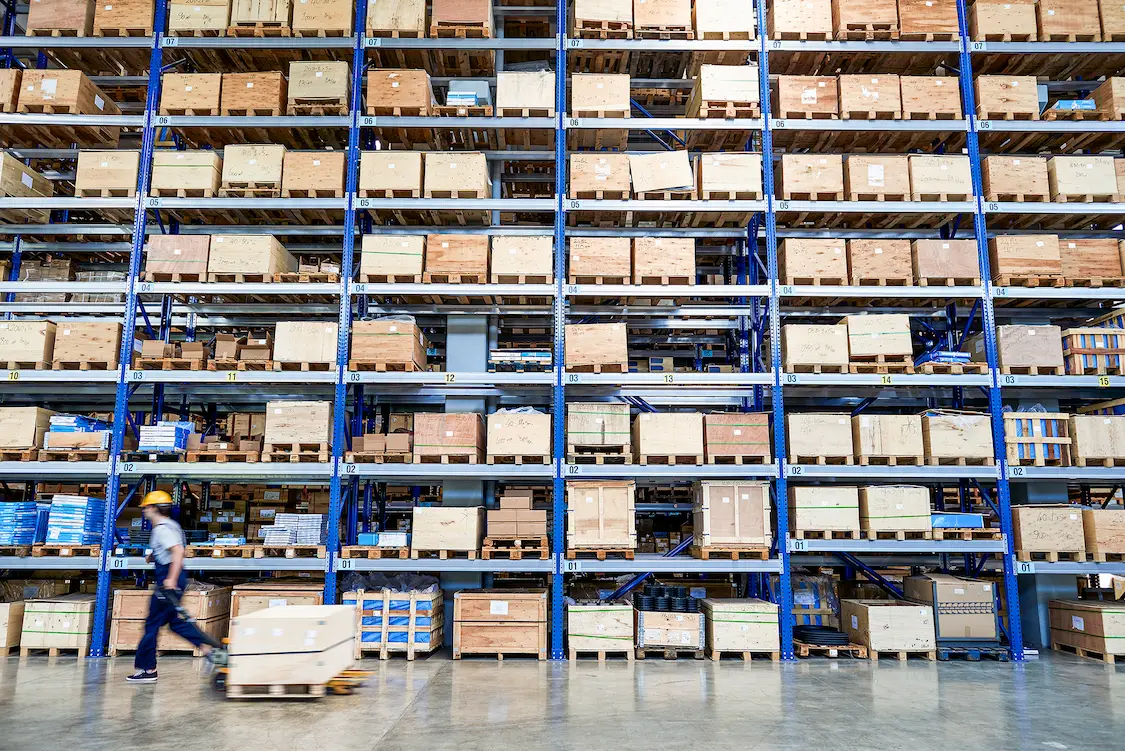In the quest for effective methods to increase operational efficiency and reduce costs, supply chain and business managers may optimize certain costs but often end up overlooking a crucial area: packaging. Companies that manufacture and ship products to customers are well aware of how essential high-quality packaging is. Packaging not only provides coverage and protection for goods but also plays a role in shaping a brand’s identity, attracting consumers, and enhancing the value of products. So, why should you not look for ways to reduce and optimize packaging costs? It is just as critical for your business’s success as any other cost.
On average, manufacturers will shell out over $150 billion on packaging annually! This is approximately 7-10 cents per dollar spent on the product, which means that if packaging costs are optimized, it can help your company ensure high-quality packaging while reducing costs effectively.
Other than the price of raw materials, there are numerous factors that contribute to high packaging costs. In this blog post, you will learn why packaging is a critical business aspect, what factors increase its costs, and how you can effectively reduce them.
Why Is Packaging Crucial for Businesses?
Packaging matters to businesses as it protects products, strengthens brand image, highlights the best features of a product, enhances customer experience (as witnessed in unboxing videos on social media channels), and improves logistics and supply chain efficiency.
Different types of packaging costs that manufacturing businesses often have to bear include standard packaging, packing & storage costs, costs associated with inserts (materials used inside packaging for extra protection or branding), and freight costs.
What Factors Raise the Cost of Packaging a Product?
Does your business have high packaging costs, but you’re unsure why? A number of factors can contribute to high packaging costs, and due to busy schedules, many business managers fail to identify these factors. Let’s look at the major factors below:
Long processing times
The more time it takes to package an item, the higher its costs will be! These costs can be directly related to the packing processes or the labor. Prolonged packing times can be attributed to factors such as inefficient packing processes, poor staff training, and the packing process’s complexity.
Inefficient manufacturing models
Manufacturing processes that do not factor in the packing stage can produce products that are not packaging-friendly. This misalignment in shapes and sizes can lead to manufacturers using more packaging materials, driving up packaging costs! Some may even feel the need to invest in custom packaging solutions. Effective manufacturing processes can optimize inventory, freeing up warehouse space. Moreover, less labor will be required, meaning lower labor costs!
High shipping expenses
If you do not package your products well, you could end up paying too much to ship them in heavier parcels. Your packaging choices and even ineffective packaging can often result in you handling exorbitant shipping costs.
Ineffective packaging materials
If your selected packaging materials aren’t sturdy enough or suitable to protect your products from damage in transit, it can damage the products and cost your company money. As a result, you might need to repack the product with better materials to prevent product damage, which incurs added costs.
Poorly designed packaging lines
Inadequate storage areas and packing line designs lead to inefficient workflows, causing delays and higher labor costs. This inefficiency slows down not just warehouse and distribution processes but other company processes, too.
Failure to optimize packaging
Optimal packing is using the right size, type of materials, and effective packing methods to hold and protect products when transferred through the supply chain system. This helps companies prevent wastage of materials, product damage, and higher costs. However, if and when they miss out on these packaging optimizations, they end up dealing with higher costs due to using more materials than necessary, which increases shipping expenses and the chances of a higher risk of product damage.
Paying for box dimensions over product dimensions
When the packaging size is significantly bigger than the size of the product, it results in the wastage of packing materials, bumping up shipping costs due to the larger volume. So, why pay extra when the product itself isn’t big or heavyweight? Packages that take up a lot of space will always incur higher shipping costs.
Poor use of warehouse space
If your warehouse space is underutilized, chances are you are paying a little extra to store your products in another facility. Efficient use of warehouse space can help achieve cost savings. On the other hand, poorly organized or cluttered warehouses will make locating items difficult, slowing down the packing process.
12 Ways to Reduce Packaging-Related Costs
Walk into any retail outlet and you will see a plethora of packaging options to choose from. For the average consumer, this array is a living kaleidoscope of color funneling their interests in the direction that is the right choice for them. But for the packaging engineer, it’s an opportunity to review, analyze, and recommend ways to reduce costs and increase profits through gaining control over packaging specifications. Today, we offer twelve sure-fire ways for packaging engineers to reduce packaging-related costs. Some of them might surprise you.
1. Look for Existing Packaging Options
Large consumer products companies with multiple product lines have hundreds, if not thousands, of packaging SKUs. Every new product requires a new package. By identifying an existing packaging option that can be used for the new product, companies can save money on packaging design and by ordering higher volumes of fewer SKUs.
2. Consolidate Similar or Duplicate SKUs
Acquisitions of companies offering similar or complimentary product lines often mean an immediate proliferation of SKUs in the system. Identifying duplicate or similar SKUs offers a perfect opportunity for consolidation and immediate cost reductions, making acquisitions even more valuable.
3. Stop Over-Packaging Waste
While every producer wants to ensure their product makes it to market without any damage, sometimes the packaging overwhelms the product in content and value. By identifying over-packaged items, you can reduce your total packaging cost and help the environment.
4. Perform Routine Audits
Recalls due to packaging failures or labeling mistakes are common and extremely expensive for all stakeholders. They are often the result of incorrect content or outdated labels. Or a supplier may have changed your box spec without providing notification of doing so. Routine audits of your specifications versus actual labels and packaging can avert potential costly recalls.
5. Increasing Supplier Flexibility
Anything can happen in the produce industry, as farmers can’t always predict yields or packaging needs to get the crop to market. Any overproduction of produce can be a blessing or a problem. Due to the high spoil rate, without packaging readily available for overproduction, the produce will go to waste. If a current supplier cannot meet the packaging needs, the cost is significant. Companies using Specright are able to immediately share packaging specs with new suppliers.
The new supplier has all of the information they need to produce tooling and deliver the needed packaging to meet deadlines. With Specright, companies are enabled to make the seemingly impossible – possible. Their products get to market on time, which leads to higher profits, improves efficiency, and protects the company.
6. Owning and Streamlining the Bidding Process
In today’s packaging world, some companies have little leverage to reduce the cost of their packaging through the competitive bidding process. Without ownership of their packaging specifications, companies can face a situation where the only way to drive competition is to provide a sample to each new potential supplier before they can offer a bid. The process of pulling packaging samples and receiving bids from potential suppliers can take months.
Companies using Specright are in control – all of their specifications are accurate and ready to use. They can share their packaging specifications with as many suppliers as they desire, as often as needed, and do it in record time. The power of specification ownership gives companies the opportunity to drive results and save thousands of dollars.
7. Audits and Recall Prevention Process
According to a survey by the FDA, the root cause for 35% of recalls is failure to meet labeling requirements. Recalls are expensive in terms of real dollars, brand damage, and lost sales. Unfortunately, recalls are on the rise as companies expect the trend to continue. Companies are spending more time and resources on mitigating and containing costs instead of solving the problems that lead to recalls. Packaging is dynamic, and companies are always introducing new designs, labels, packaging, etc. Additionally, packaging vendors can inadvertently change material without notifying their customers.
The result is a proliferation of SKUs, as well as packaging that does not match the specifications. Through our built-in audit function, Specright customers have the ability to perform audits at any time. Specright provides auditing services, where our engineers review if the actual packaging matches the specifications. This type of quality control reduces the frequency of recalls and increases efficiency throughout the entire packaging/distribution process. Not to mention, the preservation of brand image is priceless for all companies.
8. Use an Intelligent Specification Management Platform
Today, many specifications are managed through disparate systems and solutions, such as email, spreadsheets, binders, and ERP systems. These methods result in SKU proliferation, higher costs, greater business risk, and abundant efficiencies throughout the value chain. By putting all your packaging specs into an intelligent platform, you can develop, store, and easily share them both internally and externally. Additionally, you can analyze them to improve efficiency and reduce costs associated with packaging bids, improving operations, reducing returns, and protecting your brand.
9. Reduce the Cost of Packaging During Turbulent Times
A looming recession will no doubt create winners and losers. The only way to survive and thrive is to take a data-driven approach to optimizing your business. And, of course, the first place every manufacturing company looks to cut costs is packaging. After all, packaging is viewed as a commodity. And the playbook is simple: reduce SKUs, go to bid, and change materials. But just because the playbook is simple doesn’t mean it’s easy to execute. With the right data at your fingertips, you can operate your business more efficiently, proactively, and intelligently, no matter the economic climate. And most importantly, you can continue innovating to make sure you emerge stronger than before.
10. Digitize Before You Can Optimize
Creating a common language for packaging that everyone could work from is the key to companies saving money and making life better for their suppliers. Taking a standard, templated approach to specification data management enables companies to compare apples to apples and easily find similar specs that can be consolidated. Tying spec data to purchase orders and pricing info can also reveal opportunities to change out materials to save costs or identify packaging materials that should be prioritized for bid. It also enables suppliers to partner with companies to find the right sourcing solutions.
The good news is, standardizing and digitizing data is no longer difficult. Five years ago, it required manual data entry and even reverse-engineering of packaging. But today, our team has deployed technology like Intelligent Document Processing to convert static documents into digital data in seconds. We’ve also built a team of people in Spec Squad that can do the heavy lifting for you to get you up and running and getting value out of your packaging data faster. Any company looking to optimize or take cost out of packaging has to digitize before they optimize, then use data to drive maximum savings and consolidation opportunities and finally have the ability to communicate any changes across their supply base to make cost initiatives a reality.
11. Use Data to Drive Cost Savings and Consolidation
Once you have digitized, standardized packaging data, it’s easy to figure out the following:
- Specs within an inch of each other (so you can consolidate)
- Specs associated with highest costs (so you can replace)
- Prevent SKU proliferation by flagging similar specs during the development phase (our similar spec feature is a customer favorite and has reduced the amount of new SKUs companies create, which enables them to purchase existing specs at a higher volume and usually better discount)
- Confidently report and avoid paying packaging fines related to sustainability (to comply with growing legislation like Extended Producer Responsibility (EPR)).
The list goes on, and these are just a few examples. You can read more about how our customers have used data to consolidate costs here.
12. Collaborate with Your Suppliers to Make Ideas Reality
Ideas are great, but execution is better. And cost savings ideas are nothing if you can’t realize the benefits. With Specright, we make it easy for companies to share data with suppliers and communicate updates on our platform. Here are just a few examples of how companies can collaborate with their packaging suppliers
- Share spec changes with suppliers and require an approval process to make sure changes get enacted
- Collaborate on new packaging designs that may substitute materials or structure to reduce total costs
- Share existing specs with new suppliers to get bids
A common misconception is that tools like Specright are punitive to suppliers. I literally started this because it would have made my life as a supplier easier. Companies will always want to be more cost-effective during downturns, but if you can work with them to partner and find those costs in innovative ways, that service is more valuable than them moving to a new vendor.
Final thoughts
As a manufacturing company owner, optimizing your product packaging costs is not just crucial to your bottom line but also important for brand association and customer satisfaction. Imagine packing and shipping a small item in a large cardboard box and adding unnecessary costs to the already overwhelming business expenses. And because you want to keep the product in excellent condition until it reaches the customer, you add additional costs using bubble wrap!
With the right packaging software solution, you can easily circumvent the issues mentioned above and apply the shared tactics to reduce unnecessary costs. Specright specializes in offering custom packaging solutions that your business can benefit from. We cater to both traditional and ecommerce businesses and supply advanced tech tools to create accurate packaging specs for your packing materials, including corrugated boxes and cartons.
Our Specification Data Management software helps create a cost-effective packaging process and maintains all critical packaging data, such as box sizes and types, in a centralized platform. We focus on sustainable packing practices and offer 100% recyclable packaging that helps reduce carbon footprint. So, are you ready to transform your packaging data management practices into a sophisticated system-based solution?
Explore More Blogs
Get Started
With Specright’s Solution Suite, you can digitize, centralize, and link your specification data to drive efficiencies, intelligence, traceability, and collaboration within your organization and across your supply chain network.




